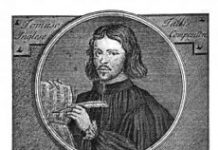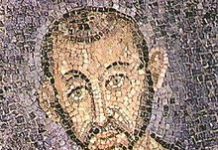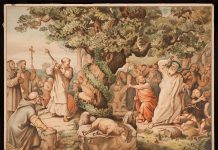BENEDICT XVI
GENERAL AUDIENCE
Paul VI Hall
Wednesday, 24 November 2010
Saint Catherine of Siena
Dear Brothers and Sisters,
Today I would like to talk to you about a woman who played an eminent role in the history of the Church: St Catherine of Siena. The century in which she lived — the 14th — was a troubled period in the life of the Church and throughout the social context of Italy and Europe. Yet, even in the most difficult times, the Lord does not cease to bless his People, bringing forth Saints who give a jolt to minds and hearts, provoking conversion and renewal.
Catherine is one of these and still today speaks to us and impels us to walk courageously toward holiness to be ever more fully disciples of the Lord.
Born in Siena in 1347, into a very large family, she died in Rome in 1380. When Catherine was 16 years old, motivated by a vision of St Dominic, she entered the Third Order of the Dominicans, the female branch known as the Mantellate. While living at home, she confirmed her vow of virginity made privately when she was still an adolescent and dedicated herself to prayer, penance and works of charity, especially for the benefit of the sick.
When the fame of her holiness spread, she became the protagonist of an intense activity of spiritual guidance for people from every walk of life: nobles and politicians, artists and ordinary people, consecrated men and women and religious, including Pope Gregory xi who was living at Avignon in that period and whom she energetically and effectively urged to return to Rome.
She travelled widely to press for the internal reform of the Church and to foster peace among the States. It was also for this reason that Venerable Pope John Paul ii chose to declare her Co-Patroness of Europe: may the Old Continent never forget the Christian roots that are at the origin of its progress and continue to draw from the Gospel the fundamental values that assure justice and harmony.
Like many of the Saints, Catherine knew great suffering. Some even thought that they should not trust her, to the point that in 1374, six years before her death, the General Chapter of the Dominicans summoned her to Florence to interrogate her. They appointed Raymund of Capua, a learned and humble Friar and a future Master General of the Order, as her spiritual guide. Having become her confessor and also her “spiritual son”, he wrote a first complete biography of the Saint. She was canonized in 1461.
The teaching of Catherine, who learned to read with difficulty and learned to write in adulthood, is contained in the Dialogue of Divine Providence or Libro della Divina Dottrina, a masterpiece of spiritual literature, in her Epistolario and in the collection of her Prayers.
Her teaching is endowed with such excellence that in 1970 the Servant of God Paul VI declared her a Doctor of the Church, a title that was added to those of Co-Patroness of the City of Rome — at the wish of Bl. Pius ix — and of Patroness of Italy — in accordance with the decision of Venerable Pius XII.
(To continue reading, please see here).












